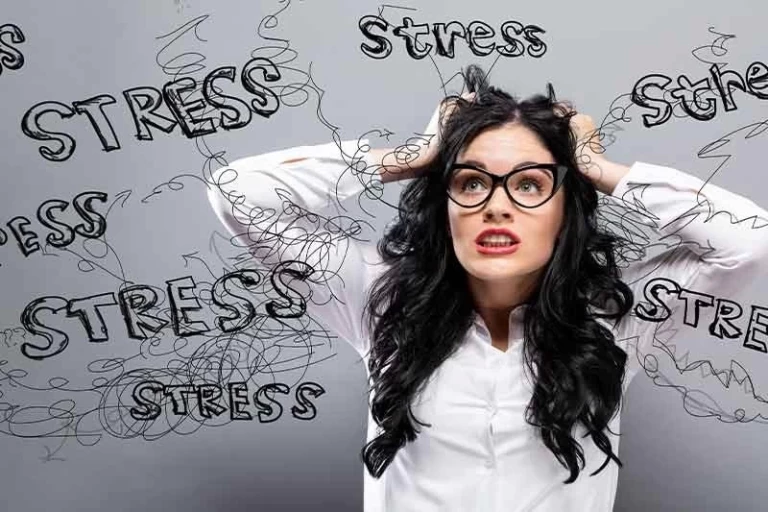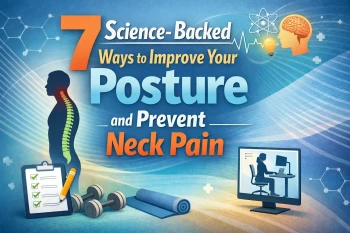
ADHD, adult attention-deficit/hyperactivity disorder, is a mental health disorder affecting about 6.1 million children in the United States between the ages of 2 to 17 (Melissa L. Danielson, 2018) and can affect them in adulthood.
ADHD, if left untreated, is linked with a reduced quality of life for adults. With medications coming with unwanted side effects, is there really a natural ADHD treatment that can help the symptoms and perhaps the underlying cause?
Symptoms of ADHD
As those who have ADHD age, some may begin to have fewer symptoms. However, there are adults who will continue to have major systems that affect their daily life. The symptoms faced in adults who are diagnosed with ADHD include:
- Impulsiveness
- Poor Planning
- Hot Temper
- Frequent Mood Swings
- Difficulty Coping with Stress
- Disorganization and Issues with Prioritizing
- Trouble Focusing on a Task
- Excessive Activity or Restlessness
- Low Frustration Tolerance
- Problems Following Through or Completing Tasks
- Poor Time Management Skills
- Difficulty Multitasking
While many symptoms of ADHD can occur to almost everyone at some point in their life, if you experience these symptoms recently or they only make an occasional occurrence in the past, there is a chance you do not have ADHD.
Those who are diagnosed with ADHD have experienced these symptoms severe enough to cause them constant problems in multiple parts of their life and can be traced back to when they were much younger – in their early childhood.
How ADHD Affects Adult Quality of Life
Finding an ADHD natural treatment can be a literal life-changer for adults living with ADHD as there are many ways ADHD affects their quality of life.
Adults living with ADHD are more likely to have trouble in obtaining or maintaining employment compared to adults living without ADHD. Adults who have not sought out treatment for their ADHD have an even higher chance of experiencing employment difficulties.
Because of their vulnerability to anxiety, addiction, and mood disorders, their relationships can be affected as well: romantic, friendships, family, etc.
ADHD will often lower your level of dopamine and those who have ADHD typically struggle with the ability to set limits on their behavior. This can be an unhealthy mix as it can lead to compulsive eating, as consuming food can help temporarily raise dopamine levels.
The struggle with setting limits on behavior does not only stop there, however; this can also play a role in misusing or overusing alcohol and drugs.
Symptoms associated with ADHD can become very stressful, keeping your stress levels up longer than those without ADHD and lead to other issues such as breathing problems, trouble controlling blood sugar, muscle tension and pain, digestion issues, and heart issues.
The list of how ADHD affects an adult’s quality of life can be a long one. Some other effects include the following:
- Sleeping Habits
- Anxiety
- Forgetfulness
- Inability to Focus
- Impulsive Spending
- Finance Issues
- Addiction to Phone, Video Games or Television
- Emotional Outbursts
As it is harder to achieve feeling “pleasure”, spending habits and addiction to screens can become a problem for an adult with ADHD.
Treatments for ADHD
Knowing how it can affect your quality of life, treating your ADHD can make significant changes to it. Although finding quick relief sounds idea, the most common treatments for ADHD may not work in giving you the relief you want or cause more issues to arise from their side effects.
Medications used for ADHD are based around your ADHD symptoms. Because these are not natural ADHD treatments, they work by forcing the body to change in an unnatural way – bringing about side effects as the body tries to adapt to the unnatural changes.
Stimulant medications, like methylphenidate or amphetamine, are the most prescribed medications for ADHD. Depending on the severity of your ADHD, more prescriptions may be prescribed along with them.
The goal of the stimulants is to boost and balance the levels of your brain chemicals called neurotransmitters. Other medications used for ADHD include non-stimulant atomoxetine and certain antidepressants.
While these other medications work slower than the stimulants, they become a good alternative to those who cannot use stimulants due to health problems or if the stimulants have caused severe side effects.
The side effects of these medications include quite a lengthy list and make finding an effective natural ADHD treatment more desirable.
Depending on the type of medication, the side effects can vary but each medication can cause some. Some of the most troubling side effects include suicidal thinking, cardiac problems, and vision problems.
Because of the side effects associated with medication and only receiving temporary relief from ADHD upon taking them, many patients are looking for a natural ADHD treatment that will be effective.
How Upper Cervical Helps ADHD
Usually, when researching for natural ADHD treatments, we find treatments that target the symptoms of ADHD: focus, anxiety, emotional changes, and more. While having relief from the symptoms sound great, the underlying cause of your ADHD is still left uncorrected as treatments help you ignore the symptoms.
The best way to know if a natural ADHD treatment will be beneficial is to know if it is helping your natural body fight against the cause or if it is targeting only the symptoms. If left untreated, the cause of your ADHD can worsen over time and cause more issues to arise.
Dr. Daniel Amen is a brain disorder specialist who has shown people diagnosed with ADD/ADHD have abnormal brain scans. In addition to his findings, there has been plenty of evidence that relates ADHD to abnormal brain activity.
Keeping this in mind, when an upper cervical misalignment occurs, it can disrupt the natural function of the brain stem and change the way your brain communicates with the rest of your body. Functions that change due to a compressed brain stem include thinking, balance, memory, sleeping habits, emotional reactions, and more.
Many of the functions affected by an upper cervical misalignment can be seen to trigger symptoms found in those diagnosed with ADHD. To restore proper function, the pressure on the brain stem needs to be removed.
An upper cervical chiropractor focuses on your upper cervical spine and makes gentle, precise adjustments to restore proper alignment that will remove any interference with the brain stem. As soon as a correction is made, the brain to body communication opens to begin properly repairing and restoring parts of the body medication and surgery cannot help.
Many patients with ADHD who have used upper cervical as their natural ADHD treatment have reported a great improvement in their condition in as little as one adjustment such as the ability to focus, reduction in depression and anxiety, better memory, and achieving better sleep.
The severity of your misalignment will determine the number of adjustments you need, but the goal of an upper cervical natural ADHD treatment remains the same: to adjust the patient as little as possible until the interference is gone and the body grows strong enough to hold the adjustment correctly on its own.
References
Melissa L. Danielson, R. H. (2018). Prevalence of Parent-Reported ADHD Diagnosis and Associated Treatment Among U.S. Children and Adolescents. Journal of Clinical Child & Adolescent Psychology. Retrieved from https://www.ncbi.nlm.nih.gov/pmc/articles/PMC5834391/pdf/nihms937906.pdf




Leave a comment